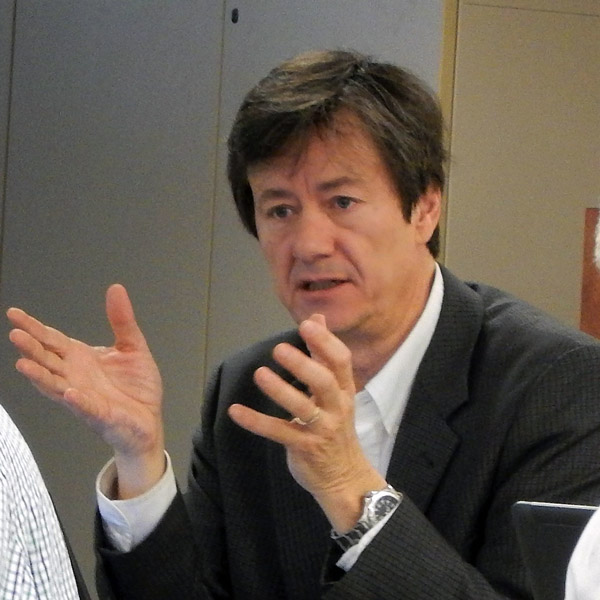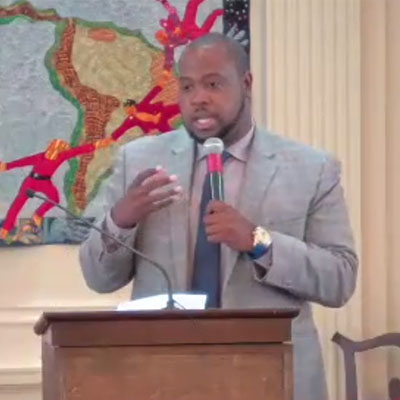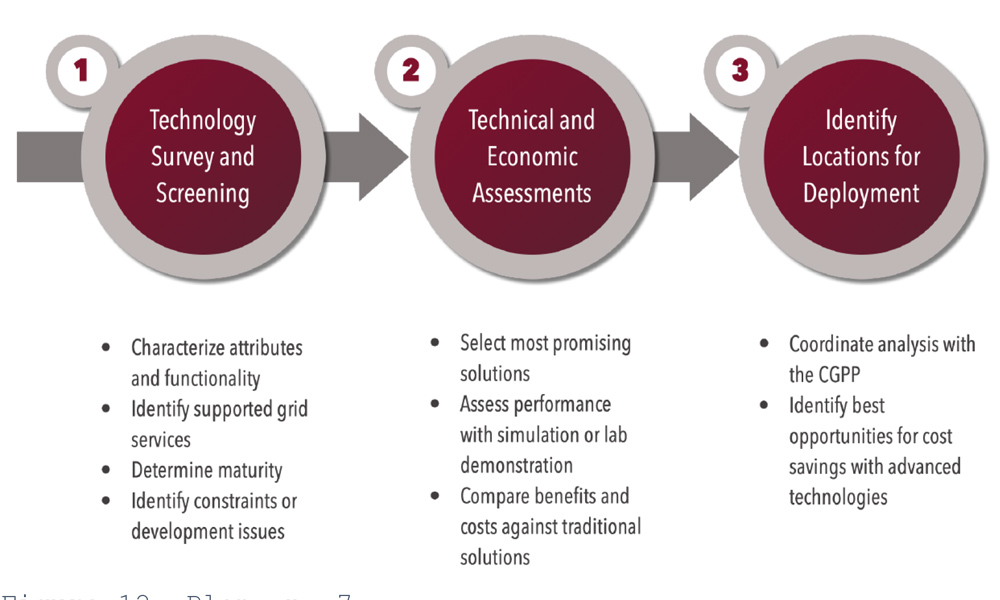SPP stakeholders approved congestion-hedging implementation policies last week, six years after first taking up the issue.
“This may be a little more like Groundhog Day because we’re coming back once again with congestion-hedging improvements,” Evergy’s Jim Flucke said during the Markets and Operations Policy Committee’s virtual meeting. “The [Market Working Group] has been working on these improvements for probably about six years now. The Holistic Integrated Tariff Team [HITT] took it over for a while, but it came back to us.
“We’ve worked very hard to find some compromise positions that satisfy the needs of those entities that aren’t getting congestion-hedging rights from their transmission that they’ve purchased. It is not everything that those entities had requested at the beginning, but after six years of work, it is a compromise between the two positions of not wanting anything and the desire to have more balance between market participants,” Flucke added.
The revision request (RR591) would implement congestion-hedging policies already approved by the Board of Directors and Regional State Committee (RSC).
MOPC Chair Alan Myers, with ITC Holdings, reminded stakeholders that the policies already have been decided to head off further discussion.
“What we’ll be talking about today is implementation,” Myers said.
The board and RSC approved a package of eight proposals, designed to increase equity, fairness and financial transmission rights awards among market participants, in July. (See SPP Board/Members Committee Briefs: July 24-25, 2023.)
Since then, the MWG has added language for the annual long-term congestion rights (LTCRs) analysis performed during each round of the auction revenue right (ARR) nomination process to ensure nominated candidate ARRs do not violate any normal transmission-line thermal ratings under normal system conditions.
The group also added language to distribute ARR surplus. This includes an iterative approach to the ARR allocation’s first round and the distribution of excess auction revenues. Once approved by FERC, SPP would allocate 50% of the excess revenue in one year under the old method and 50% under the new method. After that, the new process will take over.
Terry Wolf, whose Missouri River Energy Services has filed a Section 206 complaint at FERC over the issue, said it still does not go far enough.
“Given our situation of having long-term firm service that predated joining SPP and receiving zero LTCRs, we continue to believe it is unreasonable and not consistent with what the precedent is,” he said. “It’s taken too darn long, and it’s not turning quickly enough to provide equity to folks with long-term firm service. I continue to be frustrated by the lack of movement here.”
MOPC Passes Plethora of RRs
MOPC approved 23 RRs and several other documents during the meeting. Myers told the Strategic Planning Committee on Jan. 18 that the agenda’s “volume of approval stuff” required members to “pound through pretty hard.”
“Hopefully, better days are ahead as the rest of our meetings this year will be face-to-face,” he said.
The endorsed revisions included:
-
- The Project Cost Working Group’s RR574, a response to concerns raised by stakeholders that SPP-issued upgrades were delayed past their need date and/or first reported in-service date. The PCWG and staff developed an in-service date delay report and a phased approach to improve transparency and situational awareness. A modified version of the RR that would have extended the original 90-day trigger for PCWG review to 180 days failed. “Extending this time to half a year is not going in the right direction,” the Advanced Power Alliance’s Steve Gaw said. “We should be adding some teeth to some of these cases.” The measure passed with 83% approval.
- The Transmission Working Group’s RR577, which clarifies the SPP flowgates that will be automatically included in the RTO’s initial constraint list; establish criteria for classifying facilities as economic needs because of congestion from planned or forced historical outages; and establish criteria for classifying facilities as reliability needs due to pre-contingency or post-contingent facility rating or voltage limit exceedances.
- RR578 passed unanimously with two abstentions. It creates a new and “appropriate” uninstructed resource deviation (URD). With an average cost to resources in 2022 of $3.65/MW of deviation proving not to be a sufficient deterrent for dispatch noncompliance, the MWG proposes the URD charge be equal to the real-time deviation above or below the resource operating tolerance multiplied by the absolute value of the real-time LMP.
- RR600.3, setting up rates for point-to-point and network service because of Western Area Power Authority’s Rocky Mountain Region and Upper Missouri region having facilities in both interconnections. The associated revenue distribution will be based on the amount of annual transmission revenue requirement specific to the facilities in an interconnection. The revision passed unanimously.
Imports Help Weather the Storm
C.J. Brown, SPP’s director of system operations, told stakeholders that were it not for a record 6.8 GW of energy imports during the Jan. 14-17 winter storm, the RTO would have been in an energy emergency alert.
“We almost got to [7,000 MW] … but 7,000 MW of imports during the storm, which is really impressive indeed, kept us out of an emergency,” he said, delivering an initial report on the event. “If you take away those imports, we would have 100% been in an EEA the entire time Sunday through Tuesday, no doubt about it. If you took away half those imports, we’re probably in an EAA, but we’re definitely on Sunday and Monday, maybe even Tuesday.”
Some of the imports came from ERCOT on Jan. 14, attracted by higher prices in SPP. Power flows went in the opposite direction Jan. 15.
The imports drew the attention of FERC Chair Willie Phillips during the commission’s open meeting Thursday. He said the storm underscored the importance of interregional transmission ties.
SPP wound up setting a peak load record for January at 46.7 GW on Jan. 17, bettering the previous mark of 43.2 GW set in 2018.
Brown said SPP experienced up to 20 GW of conventional resource outages during the event because of frozen coal piles and plant issues along the Missouri River. With wind “screaming” at times and producing 20 GW of energy at its high point, the grid operator was able to meet demand.
“Things just do not operate well in -20 temperatures. They just don’t,” Brown said.
McAdams to Consult with REAL Team
The leadership may have changed within the Resource and Energy Adequacy Leadership (REAL) Team, but it still is focused on addressing SPP’s resource adequacy corporate risk and goals, staff told MOPC.
“It continues to be one of our corporate goals to mitigate this risk and move forward in a valuable and measurable manner for all of the various policies and initiatives we have going on,” SPP’s Casey Cathey said.
Kristie Fiegen, chair of the South Dakota Public Utilities Commission, has replaced former Texas commissioner Will McAdams as the REAL Team’s chair. McAdams resigned from his posts in December. (See McAdams Honored During Last Texas PUC Meeting.)
McAdams will remain involved with the team’s work. He has formed his own consulting firm, McAdams Energy Group, with a focus on energy and infrastructure development. The RSC already has contracted with McAdams’ firm to consult on mitigating the resource adequacy risk within the RSC and the REAL Team, SPP’s Kim O’Guinn said.
Kansas Corporation Commissioner Andrew French has filled McAdams’ RSC seat on the REAL Team. To preserve the team’s regional balance, Texas Public Utility Commission senior economist Shawnee Claiborn-Pinto has replaced Kansas Corporation Commission staffer Shari Albrecht.
Staff credited McAdams with the team’s success last year, which included developing and approving revision requests related to a winter season resource adequacy requirement (RAR) (RR549), performance based accreditation (RR554), and effective load-carrying capability (RR568), and demand response accreditation and fuel assurance policies; beginning an expected unserved energy (EUE) study and the load evaluation portion of the Future Energy and Resource Needs Study (FERNS); and completed the 2023 loss-of-load expectation study.
This year, the team has set its sights on an “appropriate” accreditation of resources, winter season requirements, planning reserve margin (PRM) methodology changes, load forecasting and a future resource mix/EUE study.
The workload includes addressing FERC’s November rejection of SPP’s proposed winter resource adequacy requirement. The commission said the RTO can address FERC’s concerns and resubmit the proposal (ER23-2781). (See “FERC Rejects Winter Requirement,” ‘Therapy Session’: SPP REAL Team Reviews Draft LOLE Study.)
The commission said the proposal did not contain any requirement that a load-responsible entity’s (LRE) resources are expected to be available. It said SPP has not demonstrated it is reasonable to permit LREs to rely on resources that are not expected to be available in the winter season to satisfy their resource adequacy requirements.
“They gave us very tangible feedback,” Cathey said. “From a staff perspective, we have not lost effective dates such that we can still move the ball forward with the winter PRM.”
SPP plans to refile the winter RAR at FERC in April. If approved, it will be nonbinding until the 2026-27 winter.
The REAL Team begins its slate of meetings with a virtual meeting Friday.
2 Items Pulled off Consent Agenda
Members pulled two revision requests off the consent agenda for individual votes but ended up approving both.
Renewable energy interests asked for more transparency into the calculations of RR603, which increase study deposits for new generator interconnection requests using FERC Order 2023’s mandated schedule and adds a non-refundable application fee. The change also increases deposits for surplus, modification and replacement studies.
Staff said a survey of the last seven study clusters indicated costs generally are 10 to 30% more than the current maximum study deposit of $90,000. Under the Order 2023 schedule, most deposits will range from $100,000 to $150,000 and would have covered the average costs for the clusters, they said.
“I’ve asked for the documentation,” Gaw said. He acknowledged SPP has said the study costs are correct but said, “There’s been some degree of concern about how these things have been handled, on the amount of the consultants that have been used and how contracts are done.”
Although the revision passed the Regional Tariff and Transmission Working Groups with just one abstention, staff said they have responded to stakeholder concerns by implementing a request-for-proposal process for special studies; reached out to SPP-approved consultants for pricing and availability; added consultants to the study pool to increase diversity and competitive costs; and performed special studies in-house when resources are available.
MOPC endorsed RR603 with 85.1% approval.
The committee also separately approved a remedial action scheme (RAS) in western North Dakota with a near-unanimous vote. The RAS will provide temporary relief in the Williston load pocket until the Roundup-Kummer Ridge 345-kV line is completed early next year.
Flucke expressed concern over the proposal, saying it is causing TCR underfunding.
SPP’s Micha Bailey said the RAS will help TCR underfunding because it loosens as the impact of that congestion constraint decreases. “That’s going to lessen the amount of congestion on that [region], which then was the amount of money owed to those TCR holders.”
MOPC’s consent agenda included 15 RRs, five of which (RR600.1-RR600.6) are related to western entities integrated into SPP’s RTO. It also included approval to retire the Thunderhead RAS in Nebraska in November; a lessons-learned report on the third Regional Cost Allocation Review; the 2024 Transmission Expansion plan; the 2023 Integrated Transmission Plan’s (ITP) short-term reliability project report; and a 2024 ITP market powerflow models waiver.
The RRs would:
-
- RR560: Move operating criteria language to the system operating limits (SOLs) methodology.
- RR583: Allow SPP to nominate LTCRs for federal service exemption and grandfathered agreements carveouts to further mitigate load’s exposure to the day-ahead market’s (DAMKT) congestion costs.
- RR587: Correct the virtual energy offer curve from 0 to 100 MW to accurately reflect current pricing.
- RR588: Modify the regulation-selection process to include qualified resources that cleared regulation in the DAMKT for the operating hour, reducing their financial risk to competitively offer ancillary services in both the day-ahead and real-time markets.
- RR593: Clarify the cost allocation for two Basin Electric substations so that both can correctly be allocated according to the base plan.
- RR594: Incorporate improvements mandated by FERC Order 2023 to ensure the generator interconnection process is just, reasonable, and not unduly discriminatory or preferential.
- RR595 Close a market design gap related to FERC Order 831’s implementation by using make-whole payments to compensate resources being unable to recover their cost of incremental dispatch in some scenarios.
- RR597: Document the DAMKT high-level process used for effective limit application.
- RR598: Remove planning criteria portions outlining the methodology to develop SOLs and interconnection reliability operating limits (IROLs) in the planning horizon. This aligns with NERC’s retirement of Mandatory Reliability Standard FAC-010-3.
- RR600.1: Clarify for western parties integrating into SPP’s RTO terms and conditions that Attachment AU, which describes the distribution to transmission owners of revenue received from MISO under a settlement agreement, applies to TOs in the Eastern Interconnection.
- RR600.2: Include existing non-radial lines, substations and associated facilities operating at 100 kV or above, and radial lines and associated facilities operated at or above 100 kV that serve two or more eligible customers that are not affiliates of each other as transmission facilities in the West under Attachment AI.
- RR600.4: Remove Attachment AT and its definition of a contract services agreement between Basin Electric Power Cooperative and SPP, which no longer will be needed with Basin’s integration into SPP’s western RTO.
- RR6005: Modify the tariff to refer to a WAPA division where it currently refers to WAPA-Upper Great Plains.
- RR600.6: Revise Attachment S, under which transmission providers determine megawatt-mile impacts separately for the SPP East Region and SPP West Region, to also include SPP Region, if needed. Because WAPA’s Upper Missouri and Rocky Mountain Region zones having facilities in both interconnections, some rates for point-to-point and network service and their associated revenue distribution will be based on the amount of annual transmission revenue requirement specific to those facilities in an interconnection.
- RR601: Ensure multiday minimum runtime RRs and clean-up RRs (RR382, RR540 and RR569) are accurately implemented and functioning as designed. The revision creates new determinants to represent the effective start-up amount of a resource that will only be used in the evaluation of the day-ahead and real-time multiday minimum run time make whole payment.


